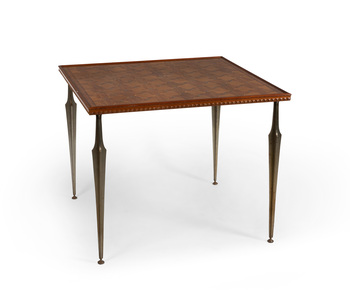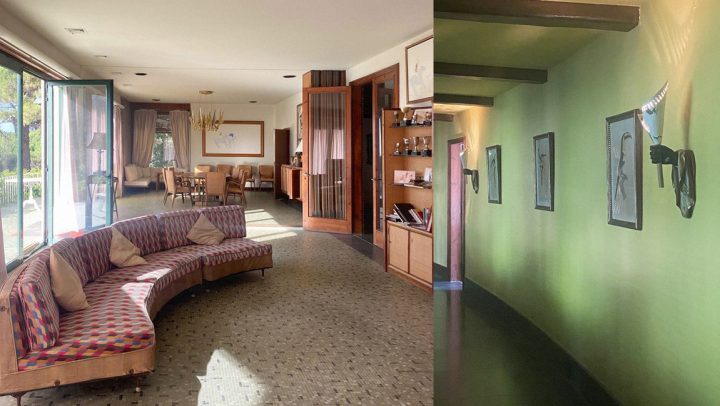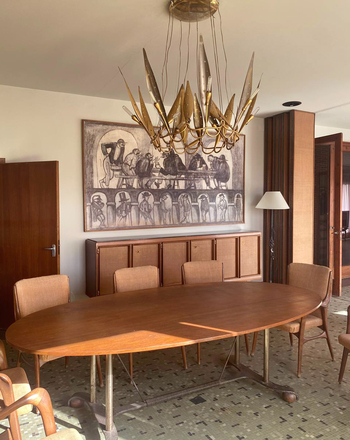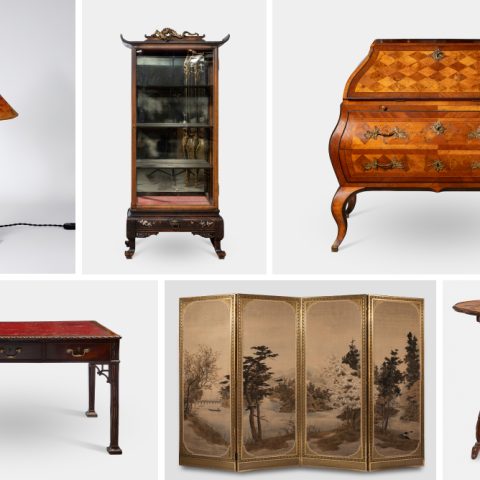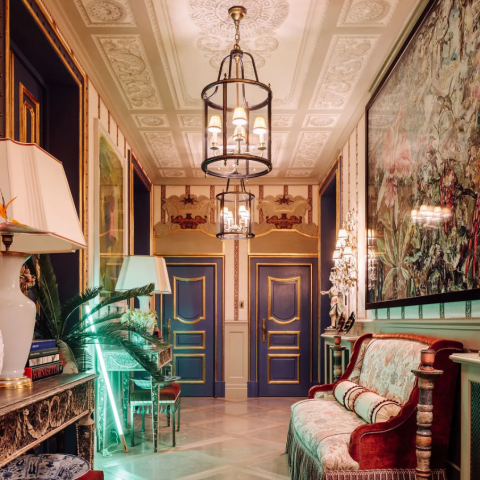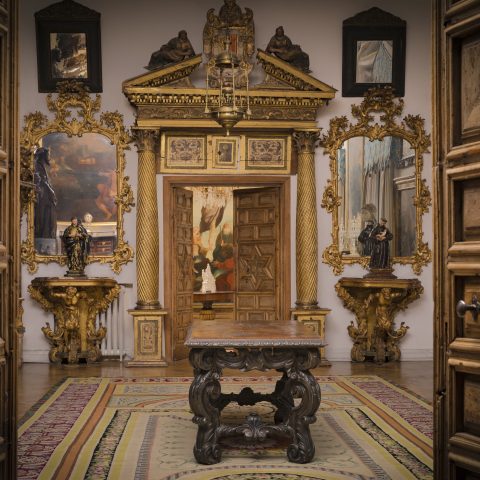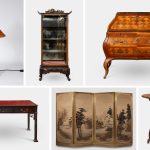Pere Cosp: del oficio al arte, de la tradición a la genuina invención.
Number 18 Fontanella Street, a discreet street in Barcelona’s Eixample, was home to a small frame and gilding workshop in the early twentieth century that over the decades would become an unavoidable enclave for any lover of furniture and decoration.
Pere Cosp was barely twenty years old when, taking the reins of the family workshop, he began to be sought after by personalities of the high bourgeoisie who wanted to redecorate their homes. By then, he was already redirecting the company towards interior design and integral decoration. The restless young man, who had grown up among marble carvings and baroque mirrors, among moldings and gilding, had learned his trade well. But that was not enough for the artist’s soul that was beginning to awaken in him.
His in-depth knowledge of the profession (gilding processes, cabinetmaking, etc…) provided him with a base of operations from which he would give free rein to his creative talent. A talent that would not only be alien to fashions and trends in vogue, but would be the spokesman of new trends, a pioneer avant la lettre, an avant-garde with nothing to envy to the modern movement that at the same time had in Paris or Milan its centers of effervescence.
Although at first he had to adapt to the tastes of his clients, many of whom asked for furniture that emulated the Louis XV or Empire style, from the forties and fifties it would be Cosp himself who would impose his own taste in the salons because he would become a local referent of an international movement. His revolutionary concepts would eventually overcome classicist prejudices.
Cosp was daring in the combination of materials, in the treatment he gave them, in the ennoblement of the elements and in the attractive patinas. But above all it was bold in design. He began with historicist proposals and evolved towards a formal refinement that would give highly original results.
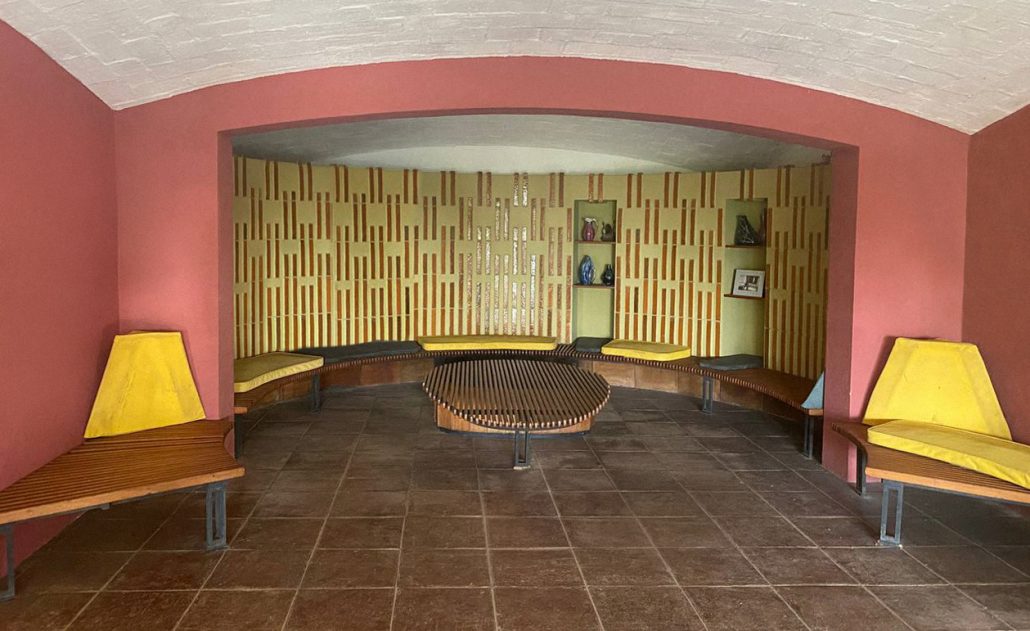
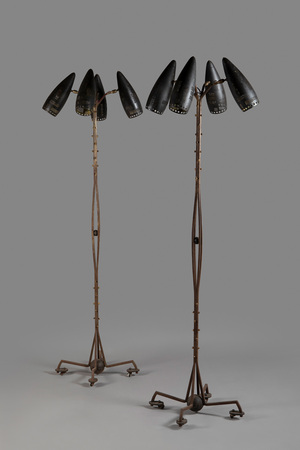
In the auction dedicated to him, Setdart gathers important samples of his most avant-garde period, pieces of great artistic value such as the pair of lamps with wrought iron feet, from a house in Llavaneras (Barcelona) with an interior designed entirely by Cosp in 1948-1949, referenced in the web page dedicated to the author, which lists the most important interior designs he made for individuals and companies. The play of the black balls housed in the shaft and the cantilevered sphere, in combination with elliptical lampshades, practically anticipates pop and the designs that in the sixties would be inspired by the galactic era.
Not to be outdone is the ceiling lamp in golden metal, endowed with clusters of palmettes in an apparently random arrangement, creating an eclectic structure whose starry openwork provides attractive patterns of light.
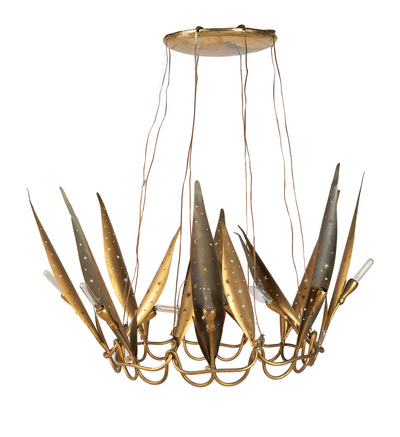
For this same house, the auction that Setdart dedicates to the designer includes a buffet-bookshop worked in every detail. Its recessed shape, the combination of ember and raffia, and the flamboyant keyholes show the great attention that Cosp paid to each element to create an unprecedented design. This buffet matches a sideboard with burlap fronts and starfish-shaped metal keyholes.
Let’s not leave this summer house on the coast of Barcelona, a symbol of the bourgeois pleasure of the time. The custom-made mahogany corner closet, the design of which bears the unmistakable Cosp stamp, was destined for one of his bedrooms. The pleats of the curved surface unify the doors in the manner of an accordion, in which four bas-reliefs reproduce cave paintings from different enclaves in Spain.
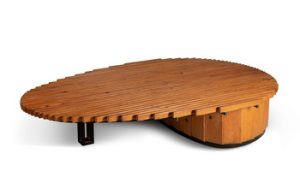
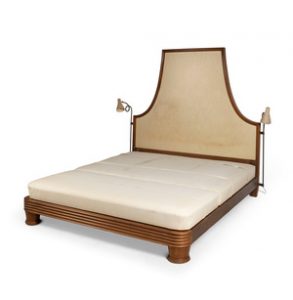
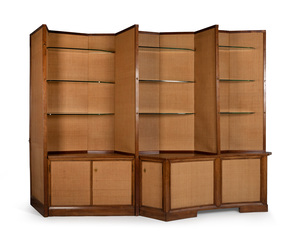
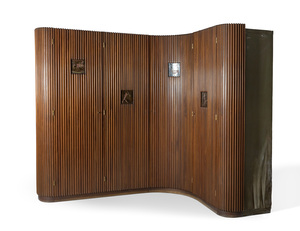
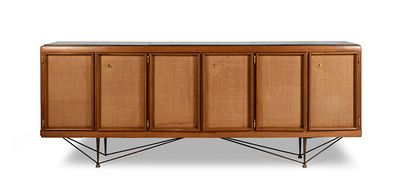
The diaphanous bedroom also had a double bed with an original concept. The ribbed waistband, in walnut, combines with a skay upholstered headboard, flanked by appliqués attached to metal curls.
Cosp was unique in his designs, freely engendered by his imagination and deep knowledge of the craft. Let us also mention the coffee table of aerodynamic profile, originally located in the living room, formed by walnut slats that confer an attractive play of full and empty spaces and that match with some benches that surrounded the room that was transformed, in many moments of celebration, into a flamenco tablao.
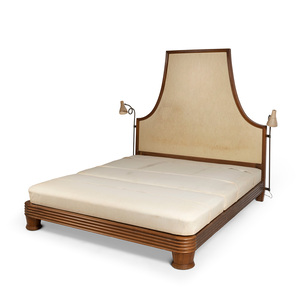
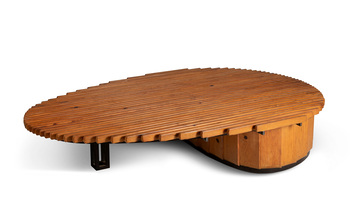
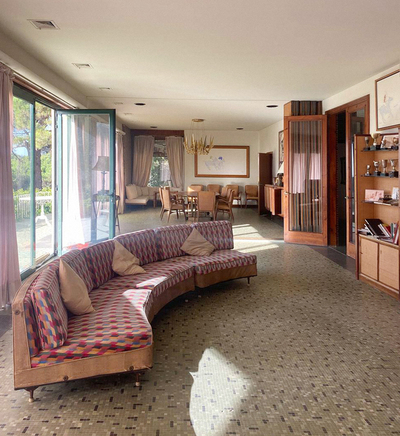
In the large living room of this same house, the spacious sofa in whose design Cosp played with an ingenious combination of materials and textures in the upholstery, based on colored fabrics and snakeskin simile.
Another example of how Cosp explored unusual possibilities of materials and extracted hidden potentials from each one is offered by the diversity of wall sconces or lamps. This is the case of the three sconces with the wood worked to emulate bamboo, as well as the unique sconces in the shape of hands carved in wood peeking out of a wide sleeve. Or, the pair of sconces designed in the shape of plant branches in painted metal and parchment shades.
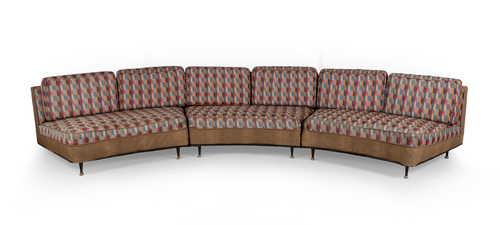
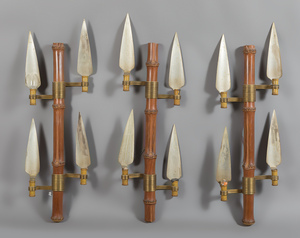
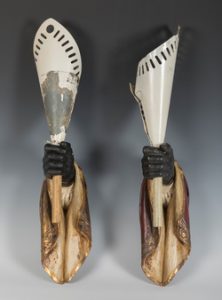
From another house whose interior was also entirely designed by Cosp, an apartment in Freixa street in Barcelona, there is a coffee table whose top has a fine marquetry work based on intertwined quadrilobules. On its iron legs, it reinvents the classic stipe.
As we can see, the assortment of this collection is wide and succulent. They are all pieces that often flirt with classic elements but that the designer brings back to his territory and achieves an unparalleled modern packaging.
Most of the Cosp furniture that Setdart offers for sale dates from the late forties and early fifties, a period in which its prestige is established and will not cease to break new ground in the following decades. Pere Cosp is represented at the Barcelona Design Museum.
